Monastery and Hermitage of Camaldoli - Guest Quarters

The Monastery of Camaldoli is a monastic complex located three kilometers from the Hermitage of Camaldoli, in the municipality of Poppi.

In July 1943 it hosted the works that led to the drafting of the Code of Camaldoli.
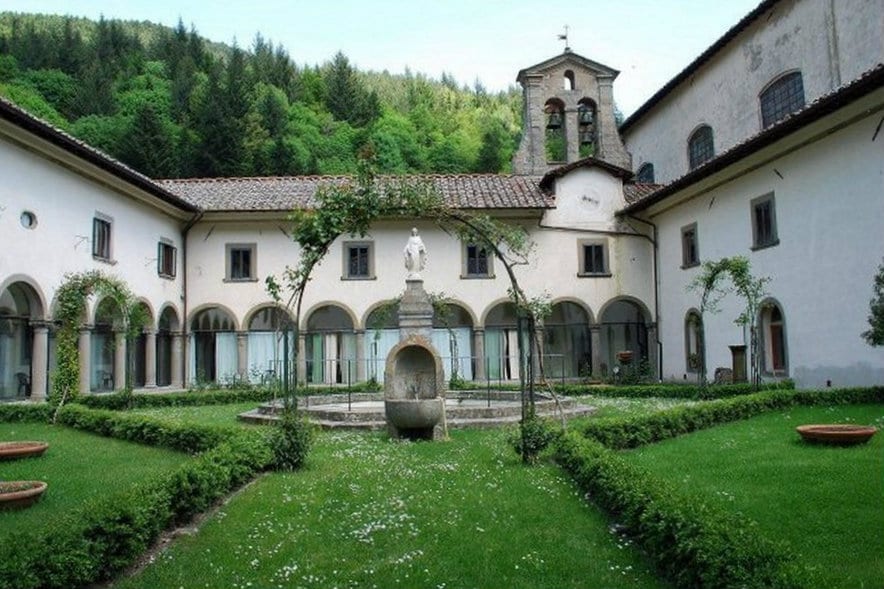
HISTORY
It rises 818 meters above sea level and is located on the banks of one of the branches of the Archiano river, quoted by Dante Alighieri (Purgatorio, canto fifth, verse 94).
The architectural complex is made up of the old hospice or guesthouse, the church and the monastery.
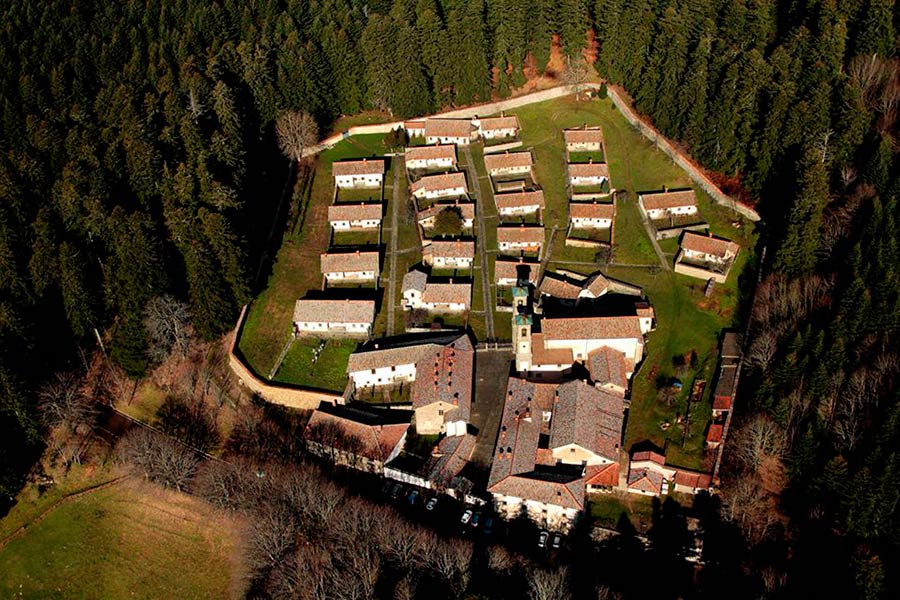
It was built starting from 1046, when the monks built a small hospital near the church. The construction works of the present monastery began in the 16th century and saw the enlargement of the cloister on the north side of the church and on the west side of the hospital which was incorporated. The works were completed in 1611.

Camaldoli was also known by the name of Fontebuona for the quality and richness of the waters that were celebrated by the monumental fountain that Ambrogio Traversari had built in front of the entrance to the monastery.
The Monastery
Characterized by very sober lines, it was enlarged in the 16th century.
The building is gathered around the central cloister which has on the south and west sides, the sides exposed to the sun, a series of round arches resting on columns with Ionic capitals. On the north and east sides, those beaten by freezing winds, there are only a few arched windows.
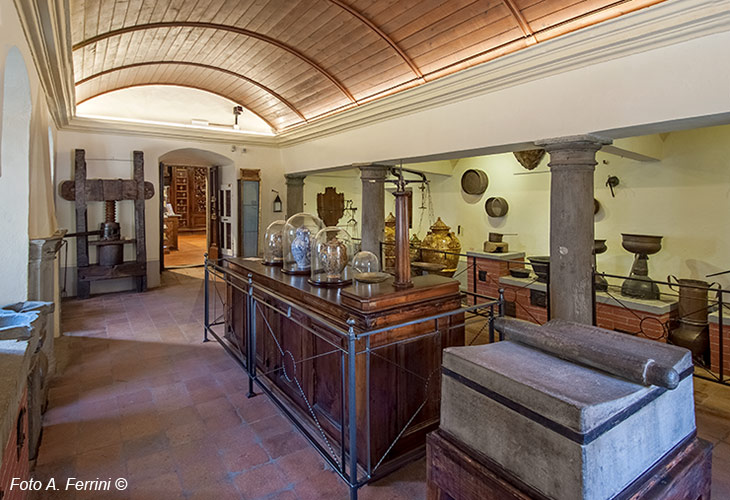
On the upper floor of the cloister there are corridors with a barrel vault and in the longest, about 85 meters, on the barrel cover there is a decoration consisting of a series of veils with various types of friezes. The monks' cells open onto these corridors.
Ancient Pharmacy
In 1046 the monks had built a small hospital to be able to treat the sick of the neighboring villages. In that structure, patients were treated free of charge and health care was guaranteed by the Poppi doctor who was paid by the monks themselves who, in the event of death, provided at their own expense to guarantee the funeral and burial. The bodies were placed in the niches located under the floor of the lower corridor. The hospital remained in use until the Napoleonic suppression of 1810.

Of the hospital remains the ancient Pharmacy or rather the ancient galenic laboratory where the herbs for the preparation of medicines were prepared and processed. Documents are kept in the monastery with recipes dating back to the 15th - 16th centuries. There are still many instruments that were part of the ancient Galenic cabinet such as stills, mortars, stoves and medieval books and handbooks are still present.
Guest Library
The guesthouse library collects about 35,000 volumes and is located on the same floor that hosted the Renaissance academies and is installed in a specially prepared environment.

Refectory
It was completed in 1609 and is characterized by simple and sober lines of Tuscan mannerism. It is furnished with walnut stalls and austere tables. The entire surface of the back wall is occupied by a canvas by Cristoforo Roncalli known as Pomarancio, depicting Christ served by angels, and was made on site in 1611.
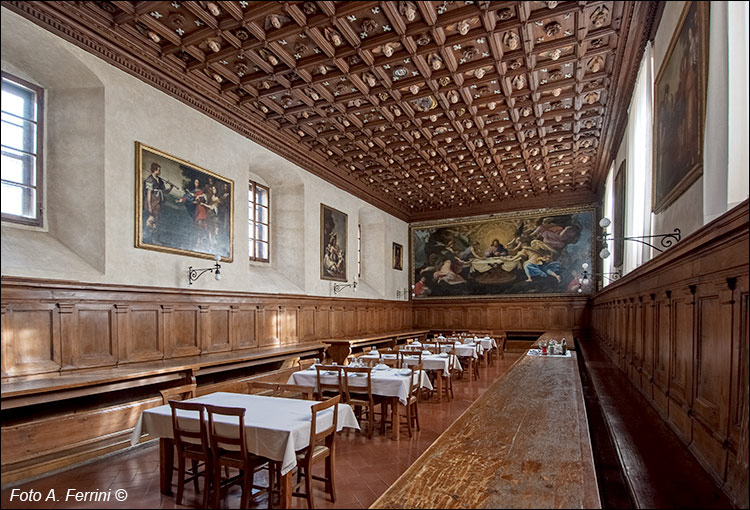
Above the entrance door there is a beautiful stone pulpit which was used for reading sacred texts during lunches. On the walls there are also some tables of the seventeenth and eighteenth centuries. The most interesting are those made by the Florentine painter Giovanni Camillo Sagrestani depicting the Deposition from the Cross and the Resurrection of Christ. On the sides of the pulpit there are two works by Lorenzo Lippi depicting Jacob watering Rachel's sheep and the Triumph of David.
The ceiling of the refectory is coffered and was completed in 1606 and is the work of some monks of the monastery itself, including the monk Simone who is the author of the statue of the Madonna in polychrome wood and the rose windows. At the end of the 18th century the ceiling was decorated with a whole series of winged papier-mâché heads which weighed down the work; they were all replaced with copies during the renovations, conducted by the Superintendency of Monuments, in 1971.
Guest quarters of the Monastery
The Foresteria was the first construction of the Camaldoli monastery. During the priory of Beato Rodolfo (1074-1089), the monastery was organized here which, as early as 1080, had welcomed those who wanted to devote themselves to monastic life and also in that period the cloister called Maldolo was built which still serves as a reception room for visitors.
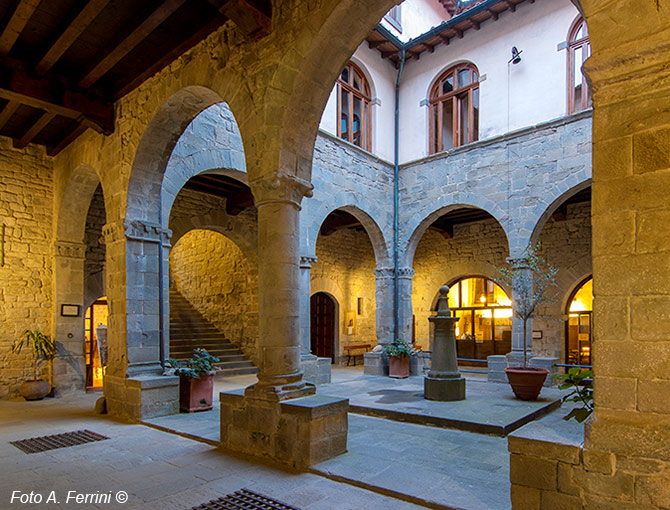
In the early fifteenth century, under the guidance of the prior Ambrogio Traversari, the first school was organized for the cultural preparation of the novices and in order to accommodate them, the second cloister was built, in Renaissance style, called dei Fanciulli.
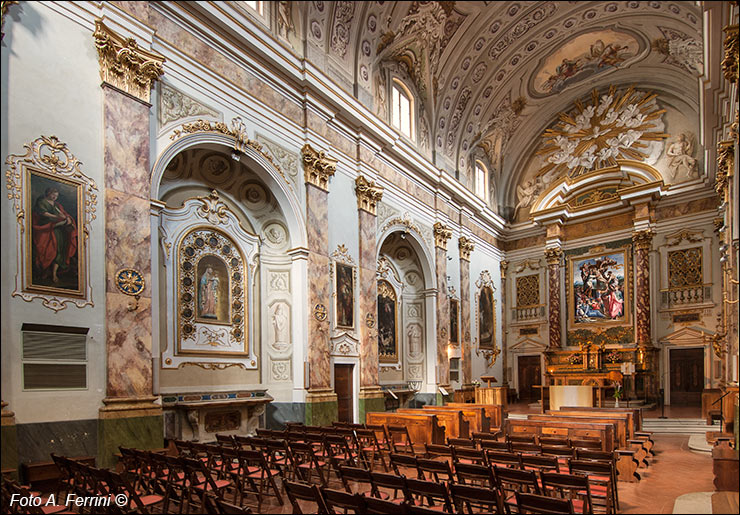
Lorenzo the Magnificent also lodged in the guesthouse in the second half of the fifteenth century, with his court of writers made up of Marsilio Ficino, Leon Battista Alberti, Cristoforo Landino and others. They had come there to start a confrontation with the monks on the research and questions that the Renaissance posed.
In order to accommodate them better, the prior general Mariotto Allegri had the upper floor of the cloister of Maldolo renovated in order to create apartments and rooms for discussion.

The prior himself presided over those assemblies that would later start the Camaldolese Academies from which Cristoforo Landino drew his work Disputatioum Camaldulensium libri IV which he dedicated to Federico da Montefeltro, Duke of Urbino.

The dispute room is preserved as it was then and dedicated to Landino is still used for literary conferences.
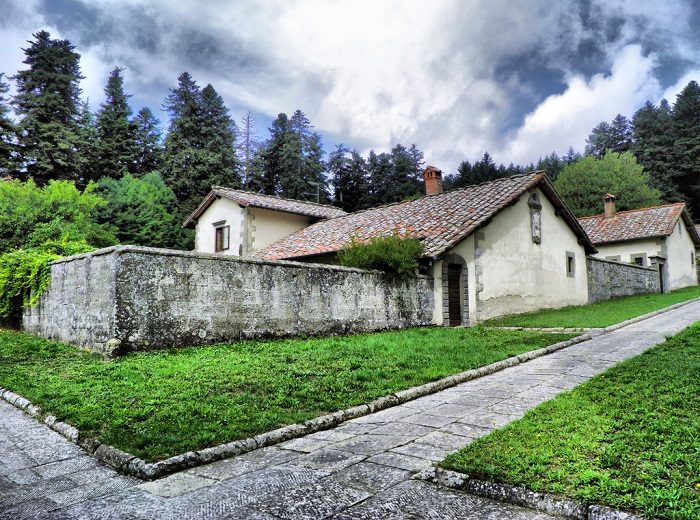
The ecclesiastical suppressions of the Napoleonic and Savoy era took everything away from the monks and only in 1934 were they able to regain possession of this place which was in a state of total abandonment. In 1954 it was completely restored.

But already in 1934 the community had resumed welcoming guests and hosting conferences of theological studies for the laity, (Theological Weeks) which for many years were conducted by Monsignor Giovan Battista Montini, the future Paul VI and later by university professors, from 1934 The Fuci Theological Weeks continue uninterrupted every year.
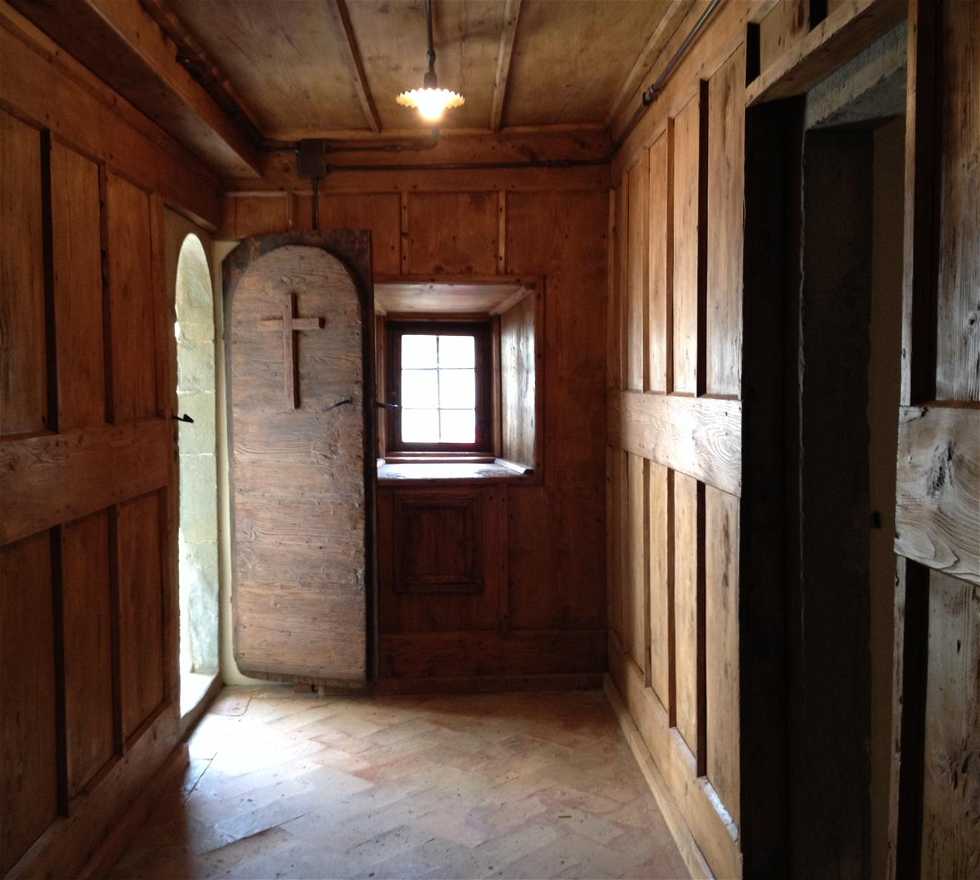
The guesthouse has 1-2-3 bedded rooms on three floors. A lift has recently been added to access the upper floors. It can accommodate up to 200 people.
"La Mausolea" conference house
Video: Monastery and Hermitage of Camaldoli - Guest Quarters
Map: Monastery and Hermitage of Camaldoli - Guest Quarters
Address: Località Camaldoli, 14, 52014
Camaldoli (AR) Toscana
Latitude: 43.79330146772204
Longitude: 11.820586323738098
Site: http://www.camaldoli.it/...
vCard created by: CHO.earth
Currently owned by: CHO.earth
Type: Building
Function: Monastery
Creation date: 13-12-2019 12:22
Last update: 22/01/2021